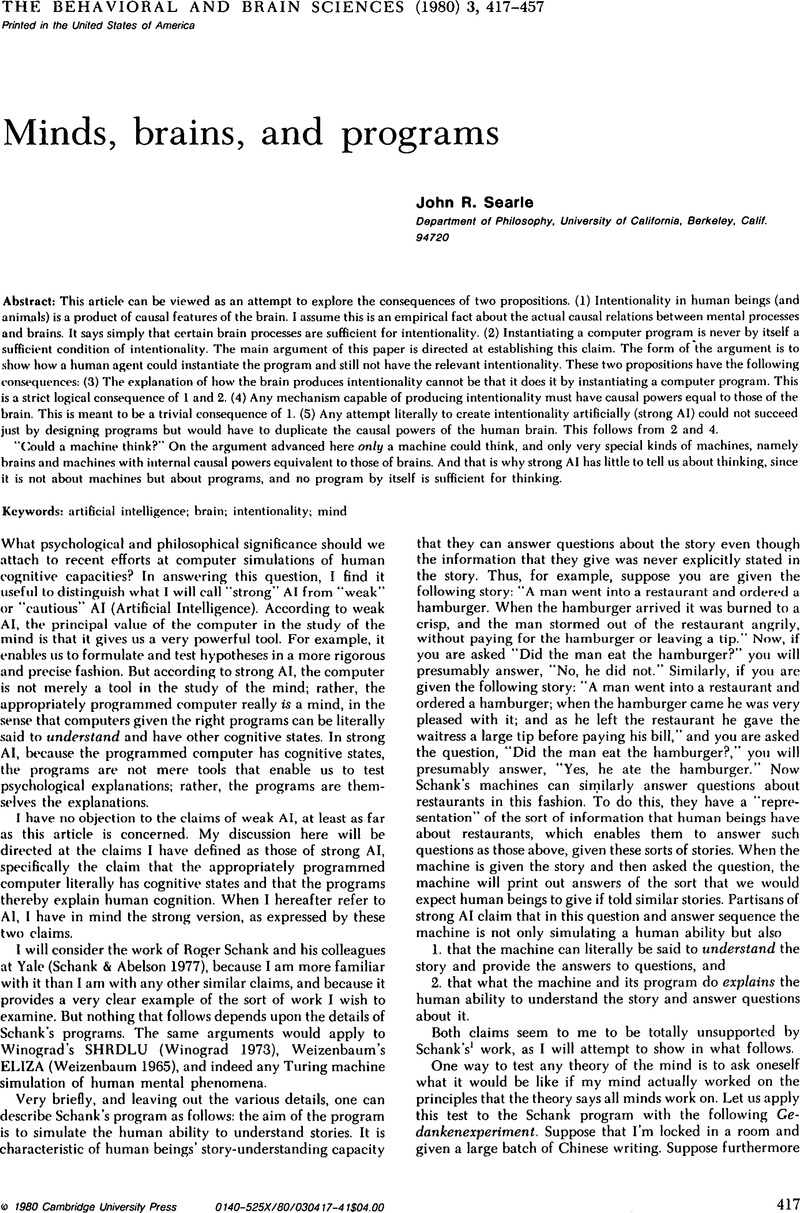Crossref Citations
This article has been cited by the following publications. This list is generated based on data provided by Crossref.
Searle, J. R.
1982.
The Chinese room revisited.
Behavioral and Brain Sciences,
Vol. 5,
Issue. 2,
p.
345.
Smythe, William E.
1982.
Rule following and rule reduction.
Behavioral and Brain Sciences,
Vol. 5,
Issue. 2,
p.
343.
McDermott, Drew
1982.
Minds, brains, programs, and persons.
Behavioral and Brain Sciences,
Vol. 5,
Issue. 2,
p.
339.
Edelson, Thomas
1982.
Stimulating understanding: Making the example fit the question.
Behavioral and Brain Sciences,
Vol. 5,
Issue. 2,
p.
338.
Savitt, Steven F.
1982.
Searle's demon and the brain simulator.
Behavioral and Brain Sciences,
Vol. 5,
Issue. 2,
p.
342.
Samet, Jerry
1982.
Understanding and integration.
Behavioral and Brain Sciences,
Vol. 5,
Issue. 2,
p.
341.
Wilks, Yorick
1982.
Searle's straw men.
Behavioral and Brain Sciences,
Vol. 5,
Issue. 2,
p.
344.
Rachlin, Howard
1982.
Minds, pains, and performance.
Behavioral and Brain Sciences,
Vol. 5,
Issue. 2,
p.
341.
Grabiner, Judith V
1984.
Artificial intelligence: Debates about its use and abuse.
Historia Mathematica,
Vol. 11,
Issue. 4,
p.
471.
Maloney, J. Christopher
1987.
The right stuff.
Synthese,
Vol. 70,
Issue. 3,
p.
349.
Harvey, R.J.
1995.
Can computers think? Differences and similarities between computers and brains.
Progress in Neurobiology,
Vol. 45,
Issue. 2,
p.
99.
Damper, Robert I.
2006.
The logic of Searle’s Chinese room argument.
Minds and Machines,
Vol. 16,
Issue. 2,
p.
163.
Sprevak, Mark D.
2007.
Chinese Rooms and Program Portability.
The British Journal for the Philosophy of Science,
Vol. 58,
Issue. 4,
p.
755.



